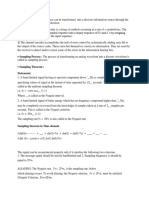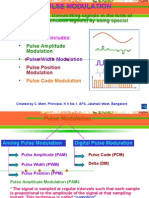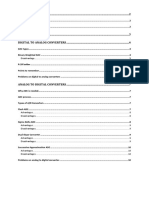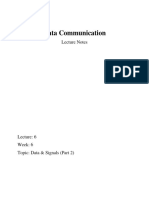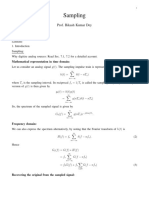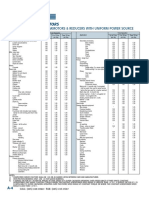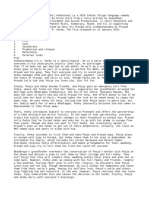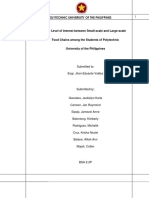0% found this document useful (0 votes)
35 views24 pagesChapter 6 - Sampling Quantization
The document discusses the conversion of analog signals to digital formats, highlighting the advantages of both analog and digital systems. It details the process of Pulse Code Modulation (PCM), including sampling, quantization, and encoding, as well as alternative methods like Delta Modulation and Delta Sigma Modulation. Key concepts such as the Nyquist theorem and noise issues in modulation techniques are also addressed.
Uploaded by
chantunmmo01Copyright
© © All Rights Reserved
We take content rights seriously. If you suspect this is your content, claim it here.
Available Formats
Download as PDF, TXT or read online on Scribd
0% found this document useful (0 votes)
35 views24 pagesChapter 6 - Sampling Quantization
The document discusses the conversion of analog signals to digital formats, highlighting the advantages of both analog and digital systems. It details the process of Pulse Code Modulation (PCM), including sampling, quantization, and encoding, as well as alternative methods like Delta Modulation and Delta Sigma Modulation. Key concepts such as the Nyquist theorem and noise issues in modulation techniques are also addressed.
Uploaded by
chantunmmo01Copyright
© © All Rights Reserved
We take content rights seriously. If you suspect this is your content, claim it here.
Available Formats
Download as PDF, TXT or read online on Scribd
/ 24


